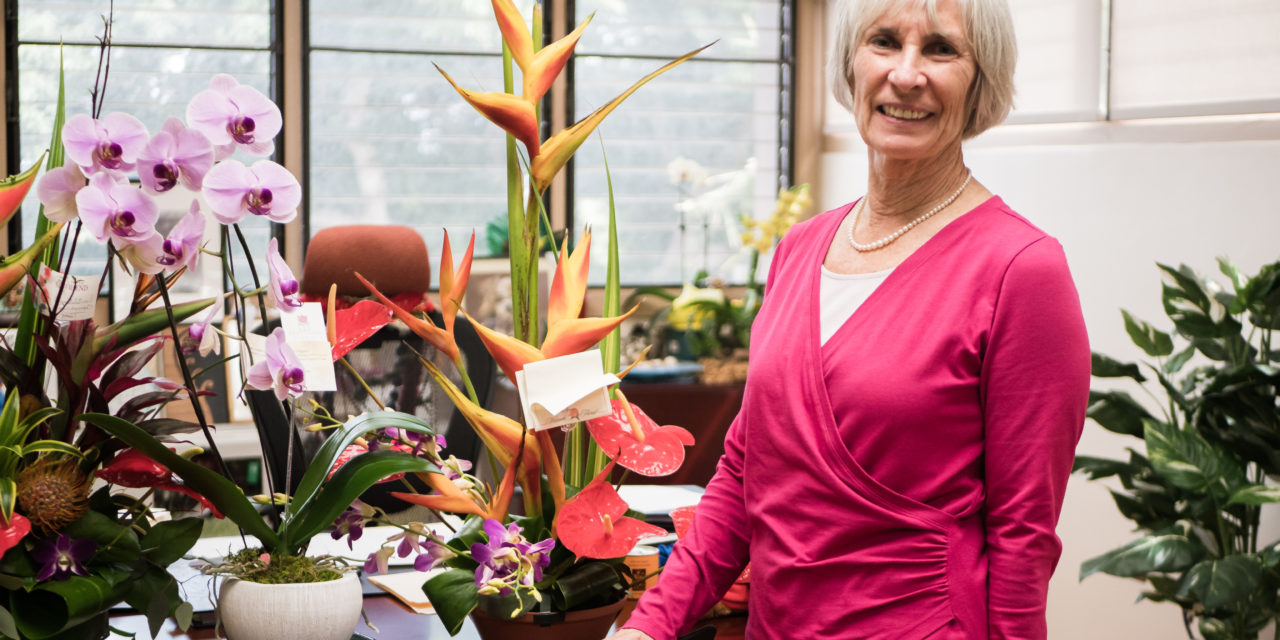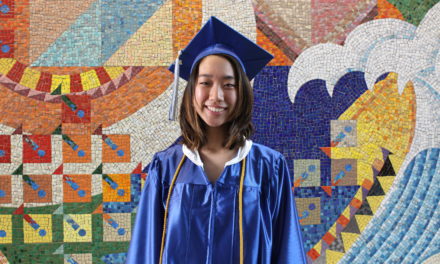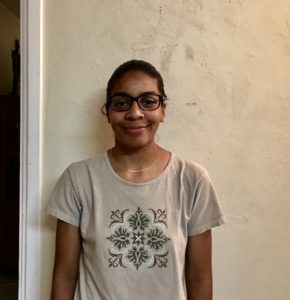By Mark Ladao|Staff Writer
With interim chancellor Louise Pagotto recommended to be permanent chancellor of Kapiʻolani Community College, she has been given the green light to implement long-term plans to improve the school.
Pagotto can focus on her plans for improving KCC now that the chancellor search is out of the way. Much of what she talked in an interview after finding out she has been recommended to permanent chancellor were about the ongoing problems voiced by faculty and staff, infrastructure issues and the success of students.
Pagotto downplayed any excitement she may have regarding her recommendation and said it did not change any plans she had as interim, which she said are “crystallizing.”
“There is some clarity regarding the things I want to do going forward,” she said. “That’s sort of taking better shape.”
Pagotto will officially begin working as permanent chancellor for KCC on June 8, when her recommendation will be posted as part of the University of Hawai‘i Board of Regents meeting agenda on the same day.
Much of what Pagotto hopes to do lies in the results of focus groups the school is to have in the Fall 2018 semester. The hope of the focus groups, which will consist of students, faculty and staff, will be to identify and document issues on campus.
Pagotto said she can anticipate the reasons behind some issues, like the dissatisfaction of the staff, but not others, such as the reason why students decide to leave KCC between semesters. The focus groups would give her qualitative data that would provide “points of departure for a deeper dive into the ‘why’ of those things.”
One of these issues is the ongoing dissatisfaction of faculty with the school’s administration, which materialized when KCC’s Faculty Senate voted no-confidence in Leon Richards, the previous chancellor, leading to his retirement. Pagotto has said this dissatisfaction has resulted in a hesitation of faculty be speak out about problems they have because they fear it will hurt their chances of possible tenure.
Pagotto said that transparency, open conversations and regular meetings will help regain the trust of the faculty.
“Closing the Loop” surveys, which have been conducted at KCC for staff and faculty in 2012, 2016 and this year, have shown an increasing favorability of Pagotto, perhaps indicating that she has successful in regaining their trust.
Pagotto said her primary job as interim was not to make any big changes but to “right the ship” after Richards’ unexpected departure, but during the chancellor search open forum on April 6, she noted the changes she had made, most of which included making herself available and open to discussion as chancellor and increasing her interactions with the school’s Authorized Governance Organizations.
During the forum, she said, “I believe in my role as a leader is to make a way possible for faculty and staff, to remove obstacles to achieving the goals of this campus.”
In the “Closing the Loop” surveys, when asked to rate the chancellor’s performance in encouraging the school’s employees to participate in discussions to improve KCC’s services and programs, 65 percent of those who participated said Pagotto has done “good” or “excellent,” which is up from the 55 percent she received in 2016, the year she was appointed interim chancellor. In 2012, before she became chancellor, 46 percent of those surveyed rated Leon Richards’ performance as “good” or “excellent.”
However, the surveys show that faculty and staff have lesser views of some other higher-level authority figures during Pagotto’s appointment as interim chancellor, as there has been a dip in the same performance rating for the school’s vice chancellors and administration (deans and directors).
Another issue Pagotto pointed out was KCC’s need for better infrastructure, saying the last building that was constructed was in 1992 and that repairs and upgrades are needed. But because of KCC’s location, the school has more to consider than others.
Because of its proximity to Diamond Head, KCC’s buildings cannot be taller than 25 feet — any taller than that would block the view of Diamond Head too much. In Waikīkī, buildings can be as tall as 280 feet, and along Waiʻalae Avenue, buildings cannot exceed 60 feet. Regarding infrastructure improvements, Pagotto said that the school’s neighbors also play a big role.
“We live in a geographic area that is highly selective,” she said. “We have neighborhood boards who are highly engaged in the neighborhoods and care very deeply about what happens here.”
One innovative plan to get around height restrictions involved building floors downward, terrace-style, to increase the size of the ʻŌlapa building. Pagotto said the plans were dissolved because of planning issues and resource considerations.
Pagotto’s goals also include helping students, whether that be academically or financially. One of the issues of a community college, she said, is that many students leave between semesters, and she hopes to find out why.
She said that students leave for a variety of reasons. Some students do not go to community colleges to get a degree but to brush up or learn more about their trade, which might be the case for students in business or hospitality courses. Of course, some students drop out because of grades or personal reasons, but Pagotto wants to learn why students leave when they are in good academic standing.
Of those students who have left but did not graduate or transfer, she said that two-thirds were in good academic standing — with a 2.0 GPA or better. Pagotto said she does not know why they left, but she entertained the idea that maybe students leave because it is a more technological world, one that can connect people on opposite sides of the globe.
“Students now can see what college is like when their friends go because of Facebook, Instagram, all these things,” she said. “Maybe college is not so scary now because you have an idea of what a dorm is, you have an idea about what happens at a college, and you can keep contact with your family so much easier.”
However, retention rates is something that Pagotto believes KCC can do something about. Engagement, she said, can help with the retention of students and help promote their success.
“Students who are engaged on their campus are more likely to be successful, and we need to find ways to do this,” she said.
About providing financial aid to students, she said, “We need to look at how we can connect students to financial resources, not just on the campus, but social resources, statewide resources, national resources.”







Trackbacks/Pingbacks